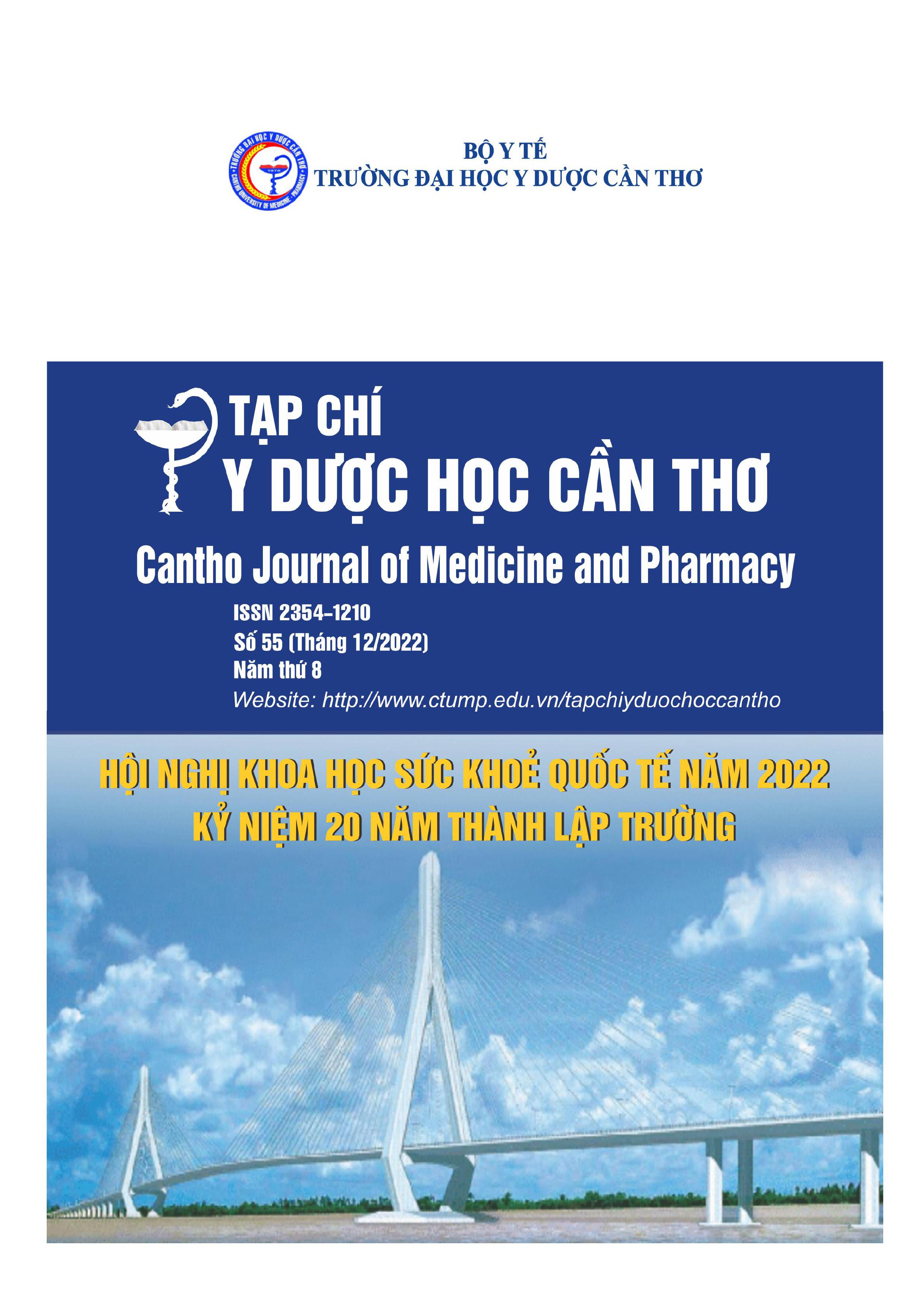WORK STRESS OF NURSES AND ASSOCIATED FACTORS
Main Article Content
Abstract
Background: Nurses’work stress impacted the effectiveness of nursing care, patient satisfaction, and turnover rate. Objective: To examine work stress and to find out some associated factors among nurses. Materials and methods: A cross-sectional study on 222 nurses working in clinical departments was conducted by using The Nursing Stress Scale - NSS for an online survey. Pearson's Correlation, T-Test, and ANOVA tests were used to analyze the data. Results: Stress in nursing work was low (0.76 ± 0.34). The factor group indicated highest nurses’ stress was the workload (1.03 ± 0.48) and followed by inadequate emotional preparation (0.85 ± 0.50). Stress was associated with nurses’ working department (p=0.001), additional duties (p=0.033), and the number of night shifts per week (r=0.159; p=0.018). Conclusion: The work stress of nurses was low and associated factors were the working department, additional duties, and the number of the night shift. Additional personnel and psychological training courses for nurses were necessary.
Article Details
Keywords
Stress, nurses, related factors
References
2. Nguyễn Thị Thanh Hương, Huỳnh Ngọc Vân Anh, Tô Gia Kiên (2019), Stress nghề nghiệp và các yếu tố liên quan ở điều dưỡng bệnh viện tâm thần trung ương 2. Tạp chí Y học TPHCM, 23(5), tr.242-251.
3. Hoàng Thị Thanh Huyền, Nguyễn Minh An, Vũ Đình Sơn (2021), Thực trạng stress và các yếu tố liên quan của điều dưỡng tại bệnh viện K cơ sở 2 năm 2021. Khoa học điều dưỡng, 4(3), tr.159 -168.
4. Trần Thị Ngọc Mai (2012), Thực trạng Stress nghề nghiệp của Điều dưỡng lâm sàng đang học hệ cử nhân vừa làm vừa học tại trường đại học Thăng Long và đại học Thành Tây. Y học thực hành, 914(4), tr.129-135.
5. Nguyễn Trung Tần (2012), Stress của nhân viên y tế tại bệnh viện tâm thần Tiền Giang. Luận văn thạc sĩ tâm lý y học, Đại học Sư phạm Thành phố Hồ Chí Minh.
6. Trần Thị Hồng Thắm (2014). Stress và đối phó stress của điều dưỡng lâm sàng tại bệnh viện Chợ Rẩy. Luận văn thạc sĩ điều dưỡng, Đại học Y Dược TP Hồ Chí Minh.
7. Dobnik M, Maletič M, & Skela-Savič B (2018), Work-Related Stress Factors in Nurses at Slovenian Hospitals - A Cross-sectional Study. Zdravstveno varstvo, 57(4), pp.192–200.
8. Khamisa N, Oldenburg B, Peltzer K, et al. (2015), Work-related stress, burnout, job satisfaction and general health of nurses. Int J Environ Res Public Health,12, pp.652–666.
9. Knezevic B, Milosevic M, Golubic R, Belosevic L, Russo A, Mustajbegovic, J (2011), Work- related stress and work ability among Croatian university hospital midwives. Midwifery, 27(2), pp.146-153.
10. Manabete S, John C, Makinde A, et al. (2016), Job stress among school administrators and teachers in Nigerian secondary schools and technical colleges. Int J Educ Learn Dev, 4, pp.1–9.
11. Park SA, Ahn SH (2015), Relation of compassionate competence to burnout, job stress, turnover intention, job satisfaction and organizational commitment for oncology nurses in Korea. Asian Pacific J Cancer Prev, 16, 5463–9.
12. WHO (2020), Occupational health: Stress at the workplace.


